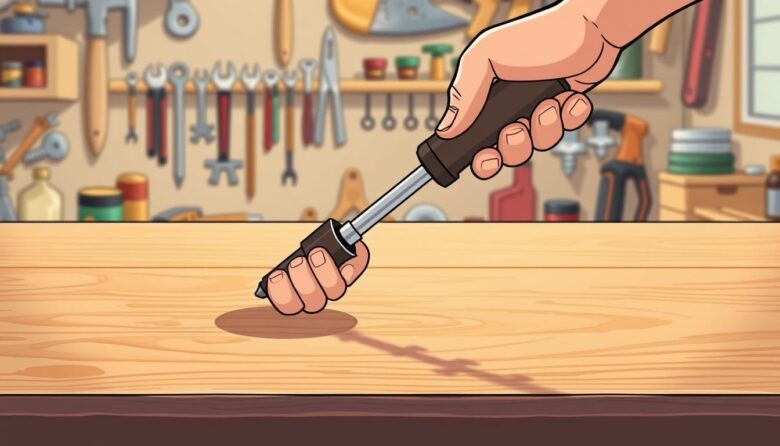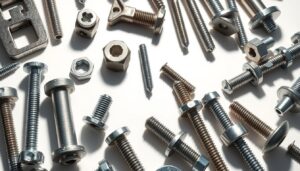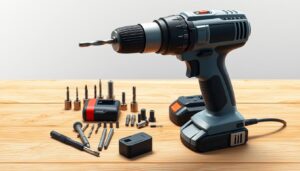Nothing halts a project faster than a stripped screw. That frustrating moment when your tool spins uselessly can turn a simple task into a major headache. This common problem is almost always preventable.
Using your fastening tools the right way is a fundamental skill. It is crucial for anyone who works with their hands, from weekend DIY enthusiasts to seasoned professionals. A little knowledge makes a huge difference.
This guide offers clear, professional instruction. We will cover the essentials to ensure your jobs go smoothly. You will learn how to select the right tool, maintain perfect alignment, and apply the correct amount of force.
Mastering this method saves time, prevents damage to your materials, and delivers clean, professional results every time. Let’s get started and put an end to stripped screws for good.
Understanding Different Screwdriver Heads for Effective Use
Many frustrating fastener problems start with a simple mismatch between the driver and the screw. Not all screw heads are the same. Using the correct tool is essential for a clean, damage-free result.
Exploring Phillips, Flathead, Torx, and Others
Several common head types dominate most projects. The Phillips head, with its cross-shaped tip, is prevalent in household items. It is designed to cam out under high torque to prevent damage.
Flathead or slotted drivers feature a single blade. You often find these fasteners in older furniture and electrical fixtures. They require careful alignment to avoid slipping.
The Torx head, a six-pointed star, offers superior grip. It allows for high torque transfer without cam-out. This makes it ideal for automotive and electronics applications.
Other specialized types include Pozidriv for European products and JIS for Japanese equipment. Hex drivers, or Allen keys, are common in furniture assembly. Each design serves a specific purpose.
Matching Screw Heads with Appropriate Tools
Choosing a driver that is “close enough” is a recipe for trouble. It often leads to a stripped screw head and a damaged fastener. A perfect match prevents slippage and maintains fastener integrity.
Investing in a quality bit set is a smart move. A kit with various bits ensures you have the right tool for any job. This approach is far more effective than forcing an incorrect driver.
Proper Screwdriver Technique: Mastering the Essentials
Two fundamental principles separate amateur work from professional results. Getting these basics right prevents damage and ensures smooth operation every time.
Maintaining Alignment and Steady Pressure
Keep the tool shaft directly in line with the fastener. This straight “on-axis” relationship creates optimal contact.
Apply continuous downward force throughout the turning motion. A firm grip prevents the tip from slipping out. Position your other hand near the tip for extra control with delicate work.
Remember the simple rule: turn clockwise to tighten and counter-clockwise to loosen. Maintain steady pressure during each rotation.
Using the Correct Driver Size for a Snug Fit
The right screwdriver should completely fill the fastener head. It must utilize both the full depth and width of the socket.
Phillips tools come in sizes from #0 to #4. #2 handles most standard fasteners. Flathead blades are measured in fractions of an inch.
Always test the next size up and down before starting. Choose the largest size that fits snugly. This approach provides maximum torque transfer.
Using an undersized tool is a common mistake. It slips easily and damages the head. This creates the frustrating stripped condition.
Preventing Damage: Avoiding Screw and Tool Pitfalls
The path to a ruined fastener often begins with simple, avoidable mistakes. Recognizing these common errors helps you prevent stripped screws before they happen. This knowledge protects both your materials and your tools.
Common Errors Leading to Stripped Screws
Using the wrong size tool is the most frequent cause of damage. An undersized screwdriver doesn’t make full contact with the screw head. This leads to slippage that progressively ruins the fastener.
Another critical error is cross-threading. This occurs when the screw threads misalign with the hole during installation. The result is permanent damage to both components.
Many people make the mistake of using screwdriver tools for unintended purposes. Prying or chiseling bends or breaks the tip. A deformed tip will no longer fit snugly, causing inevitable stripping.
Strategies to Prevent Over-tightening and Slippage
Always start by turning the screw counter-clockwise to seat it properly. Feel for the slight sink indicating correct alignment. This simple step prevents cross-threading.
Pay attention to resistance during installation. A properly installed screw turns smoothly until fully tight. If you encounter increasing resistance, stop immediately.
Back out the fastener and carefully re-seat it. Forcing it only compounds the damage.
Avoid over-tightening, especially in softer materials. Tighten only until snug and secure. Excessive torque can strip the head or damage the material itself.
Maintain your tools in good condition. Replace worn screwdrivers to ensure precise tip geometry. This provides the snug fit needed to prevent slippage.
Selecting, Maintaining, and Organizing Your Screwdriver Set
Organization and maintenance are the unsung heroes of any successful tool collection. A well-kept screwdriver set performs better and lasts longer. This approach saves you time and frustration during projects.
Proper Care and Storage for Long-lasting Performance
Store your tool collection in a dry location. Moisture causes rust on metal components. Use a toolbox with separate compartments or a wall-mounted rack.
This organization prevents damage to precision tips. Never toss screwdrivers loosely in drawers. They can collide and become dull.
Clean your tools after each use with a cloth. For stubborn grime, use mild soap and water. Dry them thoroughly to prevent rust.
Apply a light coat of machine oil to metal parts periodically. This prevents corrosion in humid conditions. It ensures smooth operation over time.
Identifying When to Replace Worn-out Tools
Inspect your screwdriver tips regularly for wear. Look for chips, cracks, or rounded edges. Bent shafts also indicate replacement need.
A damaged tool cannot maintain proper contact with a screw head. This increases slipping risk and potential injury. Replace compromised items promptly.
Investing in a quality screwdriver set pays dividends. Hardened steel tips and ergonomic handles deliver reliable service. Proper maintenance extends their lifespan significantly.
Understanding Torque, Pressure, and Proper Alignment
The relationship between rotational force and downward pressure determines fastener integrity. Applying the correct amount of torque while maintaining optimal contact prevents common installation errors.
Successful installation requires understanding how materials respond to tightening force. Different substrates demand unique approaches to torque application.
Balancing Force for Different Materials
Smaller screws require significantly less rotational force. Over-tightening delicate screws easily damages threads or strips the head entirely.
Electronic components demand extremely gentle handling. When you feel resistance, provide only an additional quarter turn before stopping.
Softer materials like wood and plastic need careful attention. Excessive torque can crush or crack these substrates.
Always maintain steady pressure to keep the screwdriver tip fully engaged. Avoid using excessive downward force that could damage the screw head.
Harder materials like metal provide clearer feedback when properly seated. Adjust your approach based on the material’s characteristics.
If your screwdriver begins to slip, stop immediately. This indicates incorrect tool size or maximum appropriate torque for that application.
Avoid using sudden jerking motions during installation. Smooth, controlled rotation provides better feedback and prevents damage to the screw head.
Wrapping Up Your Screwdriver Mastery
Developing mastery with your fastening tools opens doors to countless successful projects. This comprehensive guide has equipped you with essential knowledge for every fastening job. You now understand how to select the perfect tool and apply it effectively.
Remember the key tips: always match your driver precisely to the fastener head. Maintain straight alignment with steady pressure. These practices prevent damage and ensure secure installations. Your attention to detail makes all the difference.
Invest in a quality set with various sizes and types. An interchangeable bit system offers excellent versatility. With practice, you’ll handle any project confidently. This knowledge serves you well across all your work.



